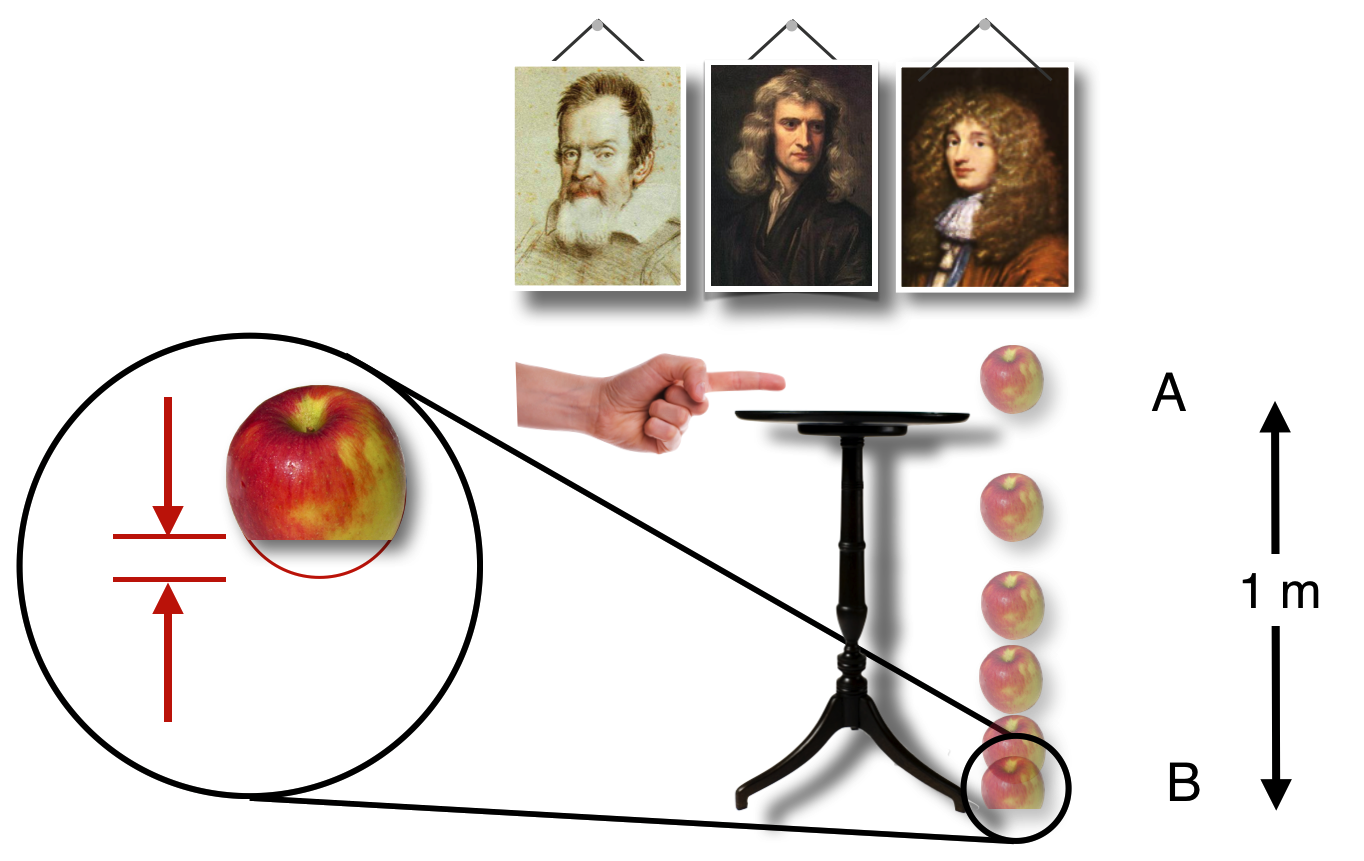The Big Mo, Force and Momentum
Example 3: more apples.
The Question: In the apple example in the last lesson you calculated that the speed that an apple would attain if it was dropped 1 meter would be 4.4 m/s. You did that, right? Let’s be more realistic. Look at the figure for our new situation. The apple at A is dropped onto the carpet and bruises as it flattens out at B, slowing it down to a stop. The carpet applies a force to it which would be pointing up. (You can see the damage in the inset.) If it takes 0.090 s (90 milliseconds) for the apple to stop on the carpet, what is the average force during that time () that the carpet applies to it in order to bring it to rest? The mass of an apple here is 0.1 kg.
Look at the squishing of the apple as it quickly slows to a stop:

The Answer: This is an example of something slowing down and deforming (squishing) through a finite time - like all collisions in real life.
The change in velocity is of course the velocity that the apple has at the end—just before it hits—minus the velocity it had at the beginning—which is zero, since it was just dropped. so . Putting the numbers:
which is about half of the force of gravity. The apple would probably not bruise very much. Go try it.